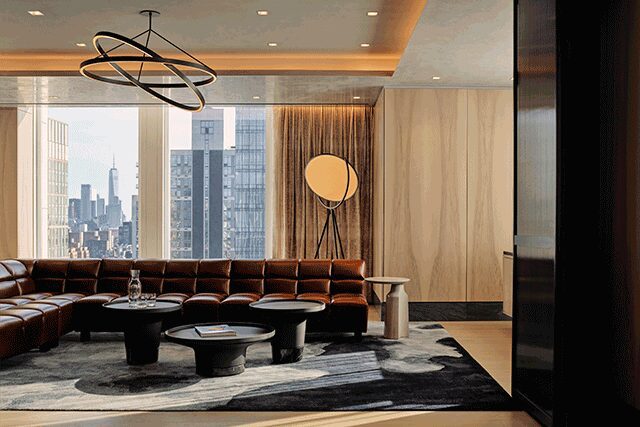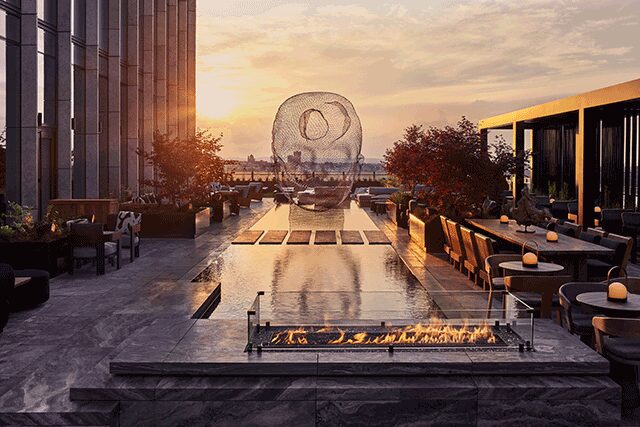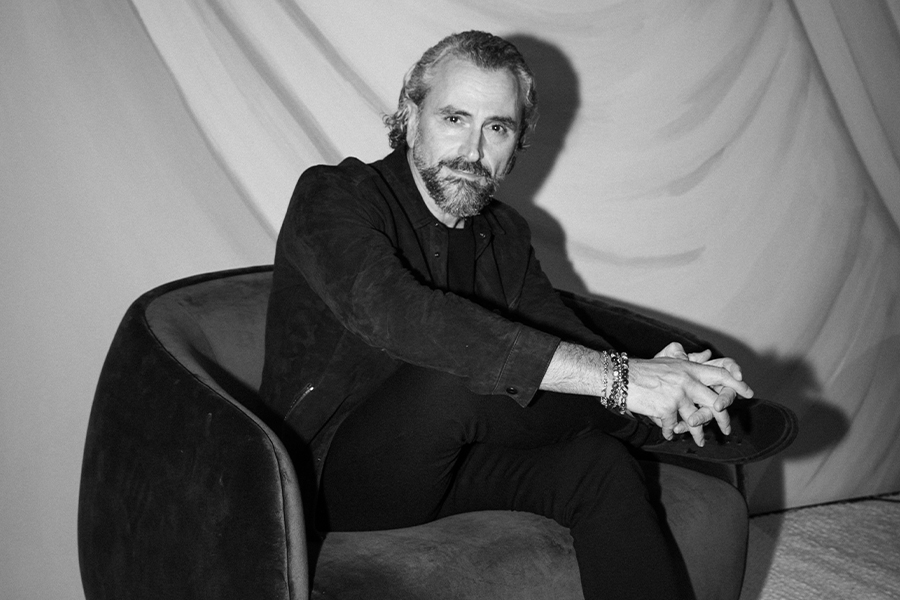Having worked for Nike, W Hotels, and Ian Schrager, Aaron Richter took a risk when he joined Equinox during a time when the fitness industry lacked design direction. As senior vice president of design at Equinox Brands, Richter is steering the company’s evolution from aspirational gym enterprise to luxury hotel company. His conversation with Hospitality Design’s editor in chief Stacy Shoemaker Rauen broke down the challenges and benefits of building Equinox’s inaugural hotel concept in New York’s sprawling Hudson Yards development.
Redefining Wellness
When Richter joined Equinox in 2008, he says no one cared about fitness, but he saw an opportunity in that. “From a macro scale, we’re positioned really well. People are saying to themselves, ‘Taking care of myself is important,’” and companies are noticing that, too. Today, Equinox is a lifestyle brand centered on fitness and wellbeing, and its members understand that going for a run, taking a yoga class, or working out with weights for an hour is a luxury in and of itself. “That’s how we look at the time people spend investing in themselves—it’s sacred,” he says.
The Three Pillars
Equinox Hotels are anchored by three pillars: movement, nutrition, and regeneration. Almost 90 percent of people neglect both nutrition and regeneration, “but without them, your movement doesn’t matter,” he says. That’s why Equinox guestrooms promote recovery and are designed to have hardwood floors to lay a yoga mat on. In addition, they include a kit packed with myofascial balls, foam rollers, and stretch bands. “It’s about giving people space to meditate and be with themselves,” he says.
Fitness Made Easy
Road warriors who put fitness first are usually met with sub-par dining and exercise options where “everything is wrong and in your way,” he points out. Equinox set out to do things differently. Hotels will be paired with the brand’s signature health clubs, healthy food options, and rooms where sleeping is prioritized, boasting mattresses made of cooling horsehair and coconut fibers. A custom-built app controls the temperature and black-out shade capabilities, reinforcing that “the room is [truly] about the science of sleep.”






